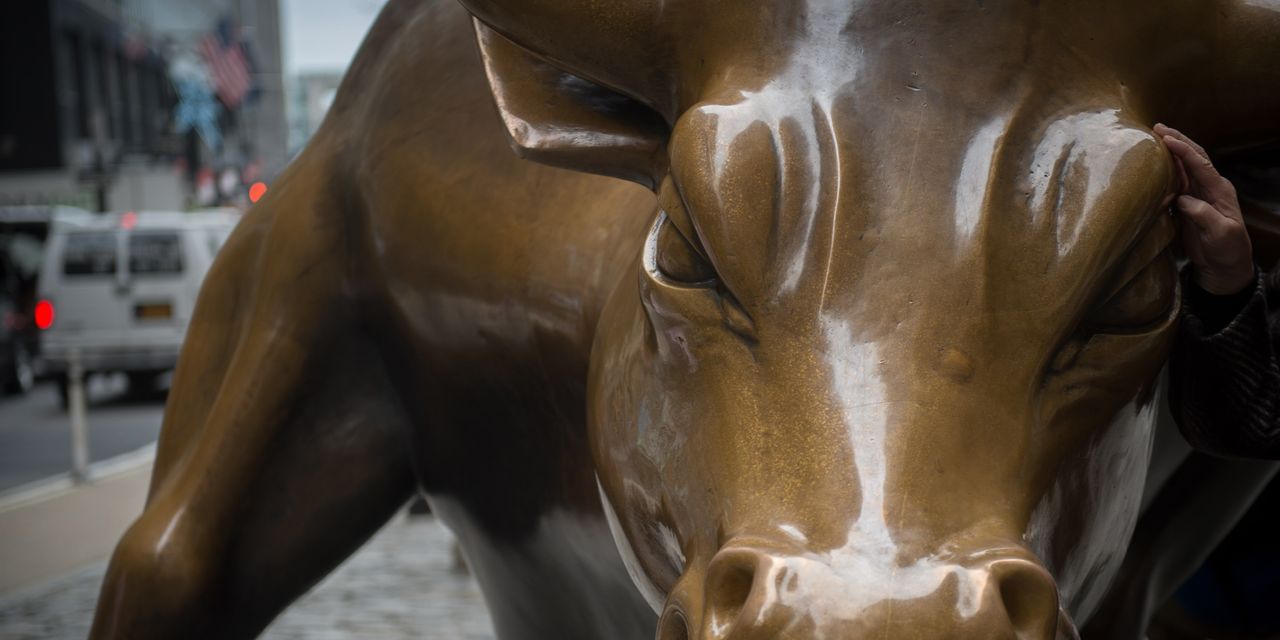Few Wall Street strategists were looking for a robust rally to kick off 2023 after 2022 went into the books as an exceptionally brutal year.
And then there was Tom Lee, an enduring equity bull and the head of research at Fundstrat Global Advisors, who set a 2023 year-end price target of 4,750 for the S&P 500
SPX,
back in December, among the most bullish forecasts for the benchmark.
Now, Lee is even more bullish on the stock market as the second half of the year gets under way. Lee lifted his year-end target for the S&P 500 by 75 points to 4,825 on Monday, which would represent an around 9.4% gain from Thursday’s level. It would also eclipse the all-time high finish of 4796.56 set on Jan. 3, 2022.
“In our view, the stock market bottomed October 12, 2022, and the rise over the past nine months is the start of a new bull market,” said Lee. “We have had a huge decline in inflation, and the inflation war is the war the Fed is waging and seemingly winning.”
The S&P 500 has jumped 14.9% this year, according to Dow Jones Market Data, having exited its longest stretch in bear market territory since 1948. It ended Thursday near 4,411. The tech-heavy Nasdaq Composite
COMP,
has surged more than 30%, while the Dow Jones Industrial Average
DJIA,
lags behind, up 2.3%.
See: History shows stock market’s bullish momentum in the first half could spill over into the second half, but analysts are not so sure
Lee, in a phone interview, told MarketWatch a decline in inflation, especially a downshift in headline consumer-price index toward 3%, could take pressure off the Federal Reserve.
Then the Fed could pivot to a more dovish stance despite deliver a hawkish pause in June, Lee said. Policy makers are often referred to as doves — who favor less restrictive monetary policy — and hawks — who favor tighter policy.
Nowcasts from the Federal Reserve Bank of Cleveland estimate that June CPI inflation may come in at 0.4% for the month, bringing the year-over-year level down to 3.2% from 4% in May. However, core inflation may come in at a 5.1% year-over-year rate on these nowcast estimates, lower than the 5.3% increase in the previous month but well above the central bank’s 2% goal.
“The core inflation is sticky because it still has these residual components such as housing and autos lagging, and once those start to fade, core CPI would fall toward under 3% annualized,” Lee said in a phone interview on Wednesday.
Fed Chair Jerome Powell in June warned that policy makers still expect more interest-rate increases this year to combat inflation, with policy makers forecasting two more quarter-point hikes.
“But two additional hikes to me isn’t as much of a shock as 500 basis points in 12 months,” Lee said, referring to the series of increases that took the fed-funds rate from near zero to its current level of 5% to 5.25% since March 2022.
See: Here’s what Wall Street’s most bullish analyst heading into the year thinks of the stock market now
Meanwhile, continuous advancements in artificial intelligence are another catalyst Lee thinks could drive the “new bull market.”
The recovery of the stock market this year has been led by megacap technology stocks after the craze around AI started to drive bullish sentiment on tech shares in the second quarter. However, many market participants have questioned the rally’s overreliance on the “Magnificent Seven” cohort, pointing out narrow market breadth that has left the average stock behind.
Lee argued that market breadth has improved significantly, and should continue to do so.
“If inflation is cooling, and therefore people become more confident that two rate hikes are the most, or maybe there’s not even two hikes, then I think it’s going to ease financial conditions, so interest rates and bond-market volatility should be diminishing,” Lee said.
The forward price-to-earnings, or P/E, ratio of the S&P 500 excluding energy was 15.7 times at the start of 2023 and now stands at 16.4 times, a mere 0.7 point increase, according to Lee.
“We believe P/E should expand as companies are viewed as resilient and we are at the start of a new earnings-per-share cycle,” the veteran strategist wrote in a Monday note. “But the key is the above happening — a combination of easing inflation and improving growth outlook.”
See: The stock market is headed for a big first-half gain. What history says that means for the rest of 2023.
In late October, Lee remained resistant to cutting his 2022 year-end price target of 5,100 and still expected a “base” case for 2023 that the S&P 500 could gain over 25%. That was counter to consensus, which saw the gauge falling to 3,000 in the first half 2023 before recovering to a flat finish amid a slide by the economy into recession.
“There’s plenty of people who think that things are going to get weaker because monetary policy tightening hasn’t been felt yet. I don’t know when people change their minds — it’s probably when the Fed decides to change its mind,” Lee said. “In my opinion, it’ll be easier for the Fed to say things more dovish if the inflation headline is at 3%. But until that happens, nobody believes inflation is falling.”
Lee defended his 2022 bullish call. The S&P 500 ended last year at 3,839.50, down 19.4%.
“If you accepted our view [in 2022], you wanted to buy stocks, but those people who didn’t believe us went to cash or went defensive. Even though it didn’t play out at the end of last year, it was the right position to have because stocks have recovered everything in 2023. We’ve been sticking with our view and many of our clients think we’ve kept them involved.” Lee told MarketWatch.
See: ‘Rolling recession’ turns to ‘rolling expansion,’ says top Wall Street economist
He admitted it wasn’t easy to be bullish in the first half of this year amid “a battle” between bullish and bearish factors, while stocks suffered a pullback following the collapse of three U.S. regional banks in March.
The average S&P 500 year-end price target is 4,113 as of July 5, according to data compiled by MarketWatch.
As for what could go wrong with his outlook for the second half? “Nothing’s guaranteed,” Lee said, referring to uncertainties around inflation, the risk of a Fed policy mistake, the Ukraine war, China’s disappointing economic recovery, consumer spending and other factors.
“Everyone is focusing on the risk, so I don’t think these are necessarily going to surprise us as much,” Lee said.
“At some point if the market doesn’t fall back, there’s going to be a panic buying because I’m sure the majority of people think this is just a bear-market rally and it’s going to fail. However, at some point they have to acknowledge that that may not happen,” Lee said.
“I think that there’s more risk of a panic-buying moment than panic-selling moment.”
Read the full article here







